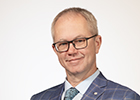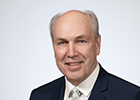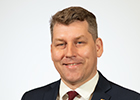Inquiry Regarding the Electricity Supply of Saaremaa (No. 68)
Session: 15th Riigikogu, 3rd session, plenary sitting
Date: 2024-01-22 17:29
Participating Politicians:
Total Speeches: 23
Membership: 15
Agenda Duration: 26m
AI Summaries: 23/23 Speeches (100.0%)
Analysis: Structured Analysis
Politicians Speaking Time
Politicians
Analysis
Summary
The Riigikogu addressed an inquiry concerning the electricity supply of Saaremaa, submitted by Mart Maastik, Riina Solman, and Helir-Valdor Seeder. The inquiry centered on the extremely poor state of electricity supply reliability for the large islands (primarily Saaremaa and Hiiumaa), especially during extreme weather conditions. Mart Maastik, representing the questioners, emphasized that although eight months had passed since the inquiry was submitted (in May 2023), the situation remained critical, citing outages occurring at his own home as an example. In addition to supply reliability, the issue of the capacity of local distribution networks was sharply raised, as they currently do not allow for connecting new renewable energy production capacities (solar and wind farms). Maastik asked the minister directly whether it would be sensible to direct CO2 quota funds towards improving the networks, as this is directly linked to achieving the goals of the green transition.
Climate Minister Kristen Michal provided a comprehensive overview of planned investments and activities. He confirmed that both Elering and Elektrilevi are making large investments to strengthen the network and make it more weather-resistant. Between 2023 and 2025, Elektrilevi plans to invest nearly 35 million euros in the large islands, replacing bare overhead lines with underground cables or covered conductors. Line corridors will also be expanded over a total distance of 400 kilometers to prevent faults caused by falling trees and branches, which is the main reason for outages. Regarding the construction of the 330-kilovolt line, the minister explained that the need for it will likely arise with the construction of the fourth interconnection line between Estonia and Latvia (within the framework of the ELWIND project) running through Saaremaa. The final decision on the route and profitability is expected to be clear in 2027 after the completion of the national special plan. Concerning the use of CO2 funds for network development, the minister noted that the Ministry of Finance has deemed it technically possible, but it is a state budget decision where alternative investments and the impact of tariff increases on consumers must be considered.
Decisions Made 1
No formal decisions were adopted during the inquiry. The discussion was concluded following the minister's responses and negotiations.
Most Active Speaker
The most active politician was Mart Maastik, the representative of the interpellators. He presented the introduction to the interpellation, repeatedly asked the minister clarifying questions (especially concerning the use of CO2 funds and the capacity of local networks), and also spoke during the discussions. Maastik represented the interpellators' position, which was critical of the government's current actions in ensuring electricity supply security and supporting the goals of the green transition at the local level.
Esimees Lauri Hussar
AI Summary
The first item on the agenda concerns the inquiry regarding Saaremaa's electricity supply, which was submitted on May 8th by Mart Maastik, Riina Solmani, and Helir-Valdor Seeder.

Mart Maastik
Profiling Fraktsiooni mittekuuluvad Riigikogu liikmedAI Summary
Maastik expressed concern over the poor state of the electricity supply in Saaremaa and Hiiumaa. He referenced the allocation of funds related to the interpellation and their subsequent withdrawal, and then presented three questions: Can the 330-kilovolt line guarantee supply security? What specific steps are planned for extreme weather conditions? And should CO2 funds be channeled into grid improvements in the name of achieving green transition goals?
Esimees Lauri Hussar
AI Summary
Chairman Lauri Hussar made a clarification for the sake of the transcript: so many interpellations were submitted on May 8th last year that he needs to practice saying “last year.” He confirmed that the interpellation was submitted on May 8, 2023, and Climate Minister Kristen Michal is invited to the Riigikogu podium to provide the answer.
Kliimaminister Kristen Michal
AI Summary
Kristen Michal stated that, in order to secure Saaremaa's electricity supply, Elektrilevi will strengthen and expand the medium- and high-voltage network and line corridors between 2023 and 2028. This includes renovating mast and substation facilities and clearing the network surroundings to mitigate the impact of trees and BRANCHES. Furthermore, the necessity of the 330-kilovolt line hinges on the outcomes of the special planning for the fourth Estonia–Latvia connection (with a decision expected in 2027). Concurrently, efforts are focused on utilizing onshore renewable energy and connecting offshore wind power to the continental grid.
Esimees Lauri Hussar
AI Summary
The address begins by thanking the respected Minister, and it is announced that there are questions which Riina Solman has been asked to present.

Riina Solman
Profiling Fraktsiooni mittekuuluvad Riigikogu liikmedAI Summary
Riina Solman inquired about the general plans for Estonia's electricity supply security, referencing power outages in Saaremaa and other regions, and asserted that investments in strengthening the grid are insufficient, requesting precise explanations regarding the size of the funding and the priorities for improving supply reliability.
Kliimaminister Kristen Michal
AI Summary
Climate Minister Kristen Michal stated that there is a statutory ten-year plan for the development of electricity grids. He noted that the causes of outages stem from unmaintained power line corridors and falling trees, and although Elektrilevi invests over 100 million euros annually, these investments are ultimately constrained by rising tariffs and negotiations conducted with the Competition Authority.
Esimees Lauri Hussar
AI Summary
Chairman Lauri Hussar thanks [them] and turns to Mart Maastik with a request.

Mart Maastik
Profiling Fraktsiooni mittekuuluvad Riigikogu liikmedAI Summary
Maastik emphasized that a 330-kV connection to Saaremaa would increase the security of supply, but local grids are unable to accommodate solar or wind farms, and he asked whether state budget CO2 funds could be utilized for grid development in the name of advancing green energy.
Kliimaminister Kristen Michal
AI Summary
The core idea of the presentation is that while CO2 funds could be allocated to the networks, state budget resources are constrained. Injecting money into one area necessarily reduces the available investment opportunities elsewhere. Additionally, there is the alternative of investing in the networks and recovering those costs through the tariff structure, which would then affect the tariff itself and necessitate a sensible agreement between the operator and the Competition Authority.
Esimees Lauri Hussar
AI Summary
Chairman Lauri Hussar calls upon Aivar Kokk.

Aivar Kokk
Profiling Isamaa fraktsioonAI Summary
Aivar Kokk pointed out that the clearance corridors beneath the power lines must be made significantly wider to prevent trees from falling onto the lines. He also noted that the income landowners generate from these specific areas is practically non-existent, suggesting that negotiations should take place regarding a yield tax (or profitability levy). This measure would allow the corridors to be widened and would reduce disruptions during snowy and thawing conditions by several dozen percentage points.
Kliimaminister Kristen Michal
AI Summary
Kristen Michal said that they are evaluating the issue both within the ministry and across the sector, and are seeking feedback. Furthermore, taking into account the point raised by the Competition Authority, the existing maintenance of current corridors might be adequate. However, perhaps investing in networks and expanding corridors in certain areas would yield a better outcome, and they will take this question forward for further assessment.
Esimees Lauri Hussar
AI Summary
Chairman Lauri Hussar invited Andres Metsoja to speak.

Andres Metsoja
Profiling Isamaa fraktsioonAI Summary
Andres Metsoja asked the minister whether the deforestation fee, which took effect at the end of last year, would also apply in the context of widening corridors, and if 6,000 kilometers of line corridors need to be cleared, what the resulting additional sum would be if the fee applies—specifically, 4,000 euros per hectare.
Kliimaminister Kristen Michal
AI Summary
Climate Minister Kristen Michal stated that this needs to be reviewed; it was discussed in the committee, an exception was made for various routes, and once it is applied, the costs have already been budgeted, and that is how it must be.
Esimees Lauri Hussar
AI Summary
Chairman Lauri Hussar thanks the minister, announces that there are no further questions, opens the debate, and invites Aivar Kok to the Riigikogu podium.

Aivar Kokk
Profiling Isamaa fraktsioonAI Summary
During his presentation, Aivar Kokk points out that the issues plaguing the Estonian electricity grid stem from Elering’s foolish decisions and the CO2 fees that burden consumers. He stresses that the renovation of the grids and the expansion of corridors in cooperation with property owners is absolutely essential. Furthermore, he views using pellet dust for electricity generation in Narva as a cheaper alternative compared to oil shale and gas.
Esimees Lauri Hussar
AI Summary
Chairman Lauri Hussar asks the audience whether they would like extra time.

Aivar Kokk
Profiling Isamaa fraktsioonAI Summary
Aivar Kokk confirms that we do have the pellets, and he thanks them.
Esimees Lauri Hussar
AI Summary
Chairman Lauri Hussar thanked [the group] and invited Mart Maastik to the Riigikogu podium as the representative of those who submitted the inquiry.

Mart Maastik
Profiling Fraktsiooni mittekuuluvad Riigikogu liikmedAI Summary
Maastik emphasized that the electricity grid in Saaremaa and surrounding areas requires urgent modernization and increased capacity, including the construction of a 330-kilovolt line to Saaremaa. This must be coupled with the coordinated operation of local grids alongside nature conservation efforts, ensuring that electric vehicle charging and the development of solar parks can proceed. Furthermore, funds from CO2 quotas must be channeled directly into the green transition and green energy, rather than simply being absorbed into the state budget, as the current throughput limitations and frequent outages necessitate realistic investments.
Esimees Lauri Hussar
AI Summary
Chairman Lauri Hussar thanked the participants, informed them that there were no further requests to speak and that the debate would be closed, and concluded the consideration of the first agenda item, as the minister did not wish to take the floor.